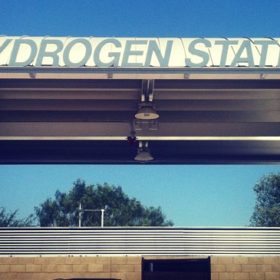
Industry body welcomes guidelines, which it says are crucial to realizing the potential of the nation’s hydrogen economy.
From pv magazine Australia.
Australia has adopted eight international standards to shape its hydrogen future, as it bids to use the fuel to enhance energy security and build a billion-dollar export industry. The rules have the potential to not only support the safety of users – with guidance on storage, transport and refueling – but also facilitate international trade as the nation aims to assume a major role in the global hydrogen economy.
Regardless of the size of Australia’s prospective hydrogen export market, the adoption of international standards will enable the country to participate in the global hydrogen economy and have a voice when working with international organizations and committees laying the foundations for a worldwide hydrogen economy.
The eight standards adopted apply to mobility, storage, production and use, and are as follows:
- AS 16110.1:2020, Hydrogen generators using fuel processing technologies, Part 1: Safety (ISO 16110-1:2007, MOD) – aims to cover significant hazards, hazardous situations and events relevant to hydrogen generators, when used as intended.
- AS ISO 16110.2:2020, Hydrogen generators using fuel processing technologies, Part 2: Test methods for performance – describes how to measure and document the performance of stationary hydrogen generators for residential, commercial and industrial applications.
- AS ISO 14687:2020, Hydrogen fuel quality – Product specification – specifies the minimum quality characteristics of hydrogen fuel for utilization in vehicular and stationary applications.
- AS 22734:2020, Hydrogen generators using water electrolysis – Industrial, commercial and residential applications (ISO 22734:2019, MOD) – defines the construction, safety and performance requirements of packaged or factory-matched hydrogen gas generation appliances, using electrochemical reactions to electrolyser water to produce hydrogen and oxygen gas. The standard is applicable for both alkaline and proton exchange membrane (PEM) electrolyser stacks and packages.
- SA TS 19883:2020, Safety of pressure swing adsorption systems for hydrogen separation and purification (ISO/TS 19883:2017, MOD) – defines safety measures and applicable design features for the design, commissioning and operation of pressure swing absorption systems for hydrogen separation and purification. [NB the summary of the guidelines issued by Standards Australia, upon which this list is based, refers to “pressure swing adsorption systems” in the title of this regulation and “pressure swing absorption systems” in the description of its application.]
- AS ISO 16111:2020, Transportable gas storage devices – Hydrogen absorbed in reversible metal hydride – defines the requirements for material, design, construction and testing of metal hydride transportable hydrogen gas storage systems. Excludes use as an onboard fuel storage solution for hydrogen-fueled vehicles.
- AS ISO 19881:2020, Gaseous hydrogen – Land vehicle fuel containers – specifies the requirements for material, design, manufacture and testing of serially produced, refillable, permanently attached containers intended for the storage of fuel-cell-grade compressed hydrogen gas for land vehicle operation.
- AS 19880.3:2020, Gaseous hydrogen – Fueling stations, Part 3: Valves (ISO 19880-3:2018, MOD) – specifies the requirements and test methods for the safe performance of high pressure gas valves used in hydrogen refuelling stations up to H70 designation.
Publication of the standards was welcomed by Australia’s chief scientist, Alan Finkel, who said: “Effective standards are central to the goal of developing a safe and globally competitive Australian hydrogen industry.” Finkel has driven the development of Australia’s emissions-neutral National Hydrogen Strategy and the Scott Morrison government’s Technology Roadmap, which consider green hydrogen – whose manufacture is powered by renewables – and the ‘grey’ form of the fuel, powered by fossil fuel generation fitted with carbon capture and storage (CCS) systems.
Fiona Simon, CEO of the Australian Hydrogen Council, said hydrogen’s ability to transform energy use and transport “must be underpinned by relevant and best-practice standards.” She added: “Creating a stable and efficient regulatory environment across the hydrogen supply chain is a key element to ensure the industry thrives.” The industry body last week inked five new memoranda of understanding with organizations in the Asia-Pacific region and Canada to collaborate on hydrogen issues, share knowledge and better facilitate project development and the deployment of hydrogen technologies.
Lắp đặt điện mặt trời Khải Minh Tech
https://ift.tt/2X7bF6x
0906633505
info.khaiminhtech@gmail.com
80/39 Trần Quang Diệu, Phường 14, Quận 3
Lắp đặt điện mặt trời Khải Minh Tech
https://ift.tt/2ZH4TRU
Không có nhận xét nào:
Đăng nhận xét